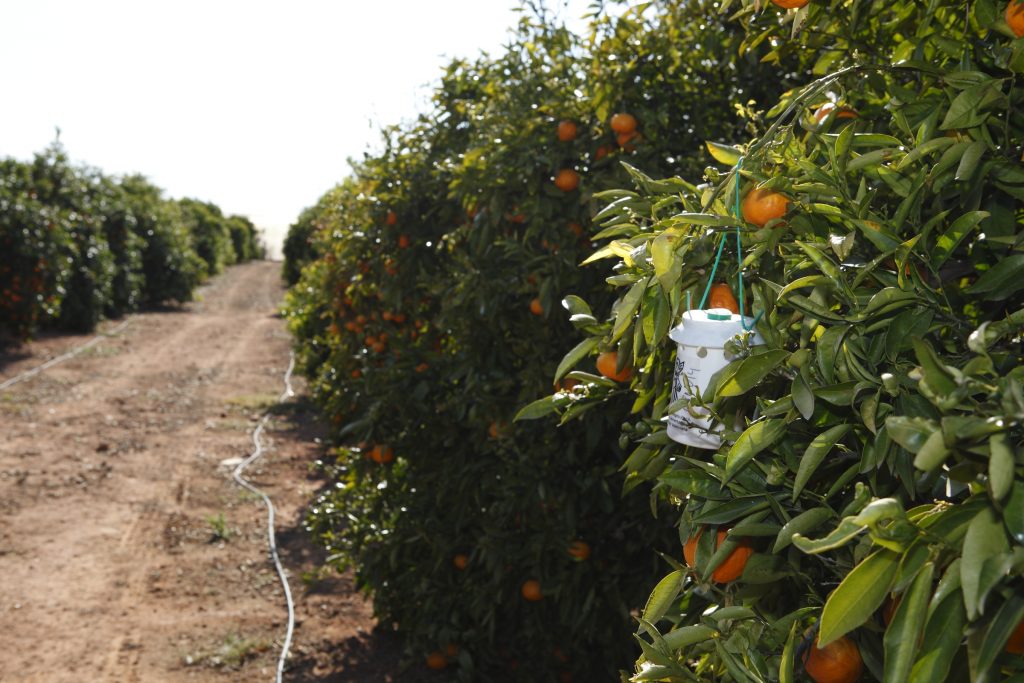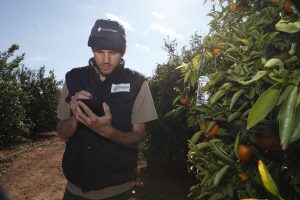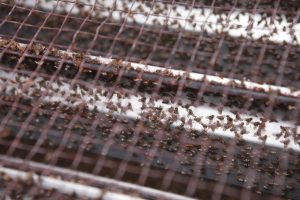
Can you tell us a bit about yourself, your organisation and your involvement in the DEMETER project? .
My name is Carles Tur. I am a technician responsible for the monitoring network of fruit fly Ceratitis capitata in Valencian Region, Spain.
TRAGSA Group is a company which provides the Spanish Ministry of Agriculture with engineering and infrastructure services, consultancy services and administrative support.
DEMETER is a big project with 60 partners, focused on pilots, and because of the size of the consortium, these pilots have been grouped into pilot clusters. As an expert in rural development issues, TRAGSA Group in DEMETER is involved in different pilots, leading the first pilot cluster, helping in dissemination and the multi-actor approach task as well as implementation of different enablers or components.
What pilot cluster and pilot project are you involved in/leading?
We lead the pilot 3.3, whose name is Pest Management Control on Fruit Fly. This pilot is one of the four pilots from cluster 3 focused on health and high-quality crops.
Apart from that we lead the pilot cluster 1 and pilot 1., you can see more information about cluster 1 in the interview that was done with my colleague Azucena(click here to see it).

TRAGSA representative monitoring fly traps
What is the objective of the pilot project?
The objective of this pilot project is to manage agricultural pests reducing the use of chemical treatments, as part of an environmentally friendly control strategy. Valencian Region, where this pilot is being implemented, is the first producer area of citrus in the world. There are more than 170.000 ha of citrus orchards, and fruit fly Ceratitis capitata is the main pest.

Fly traps
Currently, an Integrated Pest Management (IPM) is being implemented based on the use of SIT (Sterile Insect Technique) as the main tool. A monitoring net provides weekly information about wild and sterile captures to evaluate the IPM. However, this monitoring net is serviced manually, and collected captures are sent to the laboratory in order to classify them between sterile and wild flies. The cost efficiency of this activity is very low and efforts should be focused on the automation of monitoring and identification.
What approach are you taking?
We are going to test the use of automatic traps that will be able to take real time images of the captures and send them to a server to count and identify wild and sterile flies in the picture based on machine learning approaches.
If results are good we will be able to reduce the cost of the activity, by decreasing the frequency of checking the traps, and in addition flies will be counted and identified automatically.
Furthermore, we are going to test some prediction models in order to try and improve the evaluation of each sterile flies’ release.
What other stakeholders are involved in the pilot?
The main stakeholders are the Valencian Region public administration and the farmers who will be able to benefit from this improvement.
The internal partners from DEMETER that are stakeholders in this pilot are:
- Tragsa, mainly focused in SIT
- Atos, mainly focused in the machine learning algorithm
Other stakeholders who will be engaged by the outcome of pilot 3.3 are identified as follows:
- Automatic traps suppliers
- Public administration.
- International Atomic Energy Agency.
- Farmers that could apply this approach in other areas.
What are the expected outcomes of the pilot project?
The expected outcome of this pilot project is to have quality field data to evaluate the distribution and longevity of the sterile males in the field as well as to better adjust the release strategy of males depending on wild population dynamics.
Find out more in our DEMETER Pilot Booklet


